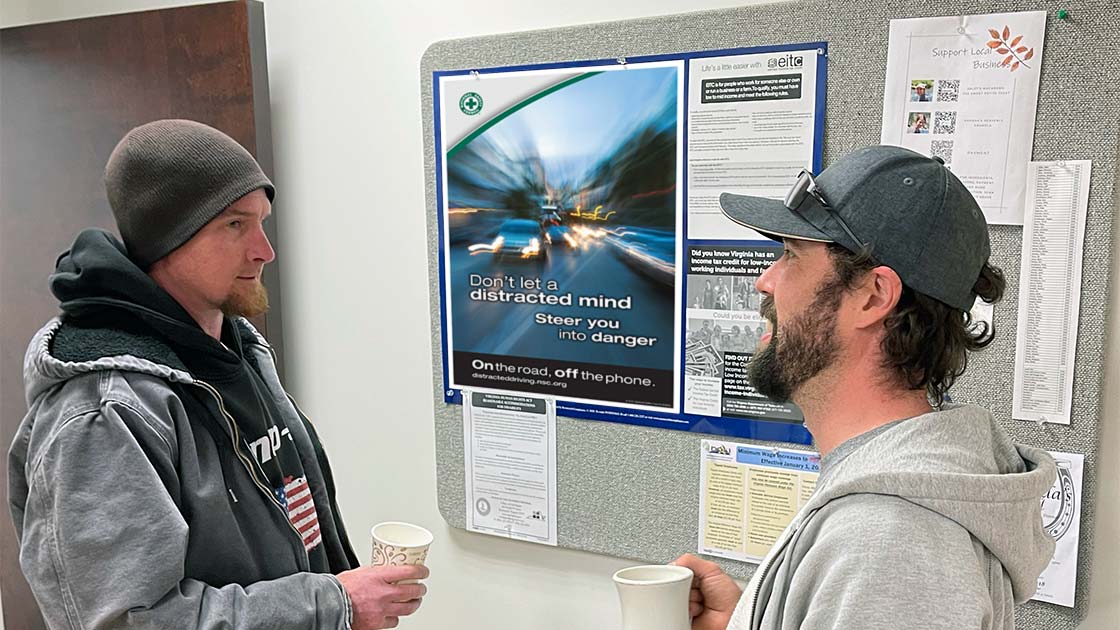
Workplace policies that discourage distracted driving can be part of the solution.
Insurance Institute for Highway Safety, Arlington, Virginia USA, reprinted with permission.
A multifaceted approach could help end distracted driving, a new study from the Insurance Institute for Highway Safety shows.
Along with strengthening laws and beefing up enforcement, safety officials should concentrate on leveraging friendships and family ties to inspire change, making drivers more aware of how serious a threat distraction represents and offering solutions to the common barriers that prevent them from simply ignoring their phones, an IIHS survey of drivers suggests.
“It may come as a surprise, but many drivers still don’t realize how dangerous it is to check a text message or glance at their Instagram feed while they’re zipping along the road,” said IIHS Research Associate Aimee Cox, the lead author of the study.
Police reports indicate that more than 3,000 people died in distraction-related crashes across the United States in 2020, accounting for 8 percent of all traffic-related fatalities. Because it’s difficult to determine if distraction contributed to a crash, that number is almost certainly an underestimate. As a member of the National Distracted Driving Coalition, IIHS commissioned a national survey designed to guide the coalition’s future educational campaigns as well as the efforts of other organizations.
Activities such as eating or putting on makeup can also increase the risk of a crash, but mobile phones are a particularly tempting distraction. Phone use is now so constant that around half of some 2,000 U.S. drivers surveyed by IIHS reported performing at least one device-based task on most or all drives over the past month. The problem of using apps enabled by smartphones is especially common among parents and drivers employed by app-based rideshare and delivery companies, an earlier analysis of the survey results showed.
>>Continue reading ...
In the current study, Cox examined why some people are more likely than others to use their phones while driving and what might persuade them to stop. Borrowing a behavior change theory called the Health Belief Model from the public health field, she developed around 60 questions designed to identify how strong a threat the participants perceived manipulating a mobile device while driving to be, the benefits they believed were associated with refraining from using their device, the barriers that prevent them from changing their behavior and the cues to action that might prompt them to do so.
“The Health Belief Model has been very useful in guiding disease-screening and immunization programs for many years,” said Cox. “It can also be an effective way to better understand distracted driving — which is a public health issue of another kind.”
Overall, most drivers agreed that distracted driving increased their risk of crashing, causing a major injury or damaging their vehicle, and most agreed that being reminded by a person they care about that they might hurt or kill someone would motivate them to take steps to avoid distraction. Not surprisingly, however, drivers who regularly interacted with their phones while driving perceived the threat to be less severe and the barriers to giving up the practice to be greater.
“Conventional, practical policy interventions that increase your chances of getting caught using your device when you shouldn’t — whether that means stronger laws, increased enforcement or camera-based ticketing — definitely have a big role to play in reducing distracted driving,” Cox said. “But these survey responses suggest that programs that leverage interpersonal relationships may also be effective.”
Programs that encourage parents and teens to form a contract agreeing to avoid distracted driving, such as the Drive Smart agreement developed by the University of Michigan’s Transportation Research Institute, for example, have already shown promise.
For the rideshare and delivery drivers the survey identified as most likely to engage in distracting device-based activities, as well as other workers, workplace policies that discourage distracted driving and technological solutions are likely more promising. Gig workers rated work requirements as one of the biggest barriers preventing them from ignoring their phones, while other drivers were neutral or disagreed slightly about the importance of work as a barrier.
Most of the surveyed drivers expressed support for Do Not Disturb features that do not require the driver to opt in and that turn on automatically whenever they’re in their vehicle. However, in an earlier IIHS study, only 1 in 5 iPhone users reported using Apple’s opt-in feature — which asks during the initial setup of the phone if the user wants it to activate automatically whenever they’re driving. One reason for that low uptake may be that drivers are reluctant to use blockers that restrict functions they view as essential.
Vehicle manufacturers and operating system designers are already addressing that challenge with voice-activated artificial intelligence (Siri and Google Assistant), integrated controls (Apple CarPlay and Android Auto) and ever more robust Do Not Disturb features. Both the Focus feature on iPhones and the Do Not Disturb feature on Android phones can be set to activate automatically when the user is driving, for example. But few users may be aware that the setting can be configured to allow notifications from specific contacts and apps while screening out others or to allow “breakthrough” notifications if senders tag messages as urgent.
As awareness of these innovations increases, they may persuade more drivers to utilize the Do Not Disturb feature and perform more of the tasks they consider essential through voice commands. However, even hands-free operation is not without risk. Earlier IIHS research has shown that voice interfaces, too, take some of the driver’s attention from the road.
Reprinted with permission from the Insurance Institute for Highway Safety. Please visit here for the original article.
»Show less …






